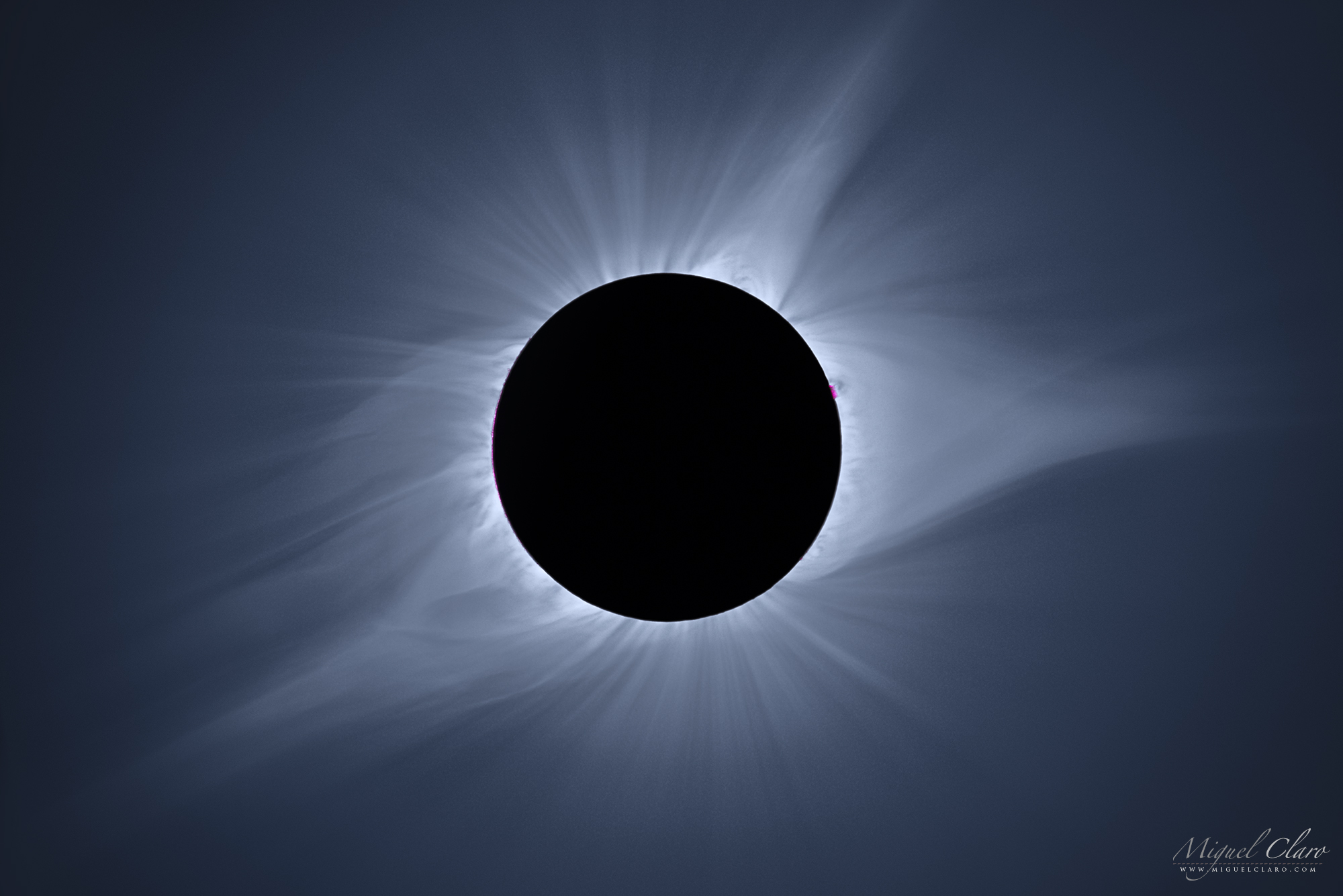Watch the Sun's Elusive Corona Appear in Time-Lapse Solar Eclipse Video
Miguel Claro is a professional photographer, author and science communicator based in Lisbon, Portugal, who creates spectacular images of the night sky. As a European Southern Observatory photo ambassador, a member of The World At Night and the official astrophotographer of the Dark Sky Alqueva Reserve, he specializes in astronomical skyscapes that connect Earth and the night sky. Join Miguel here as he takes us through his photograph "Solar Radiography: The Sun's Corona Shines Brightly During a Total Solar Eclipse."
One of the most beautiful things to see during a total solar eclipse, when the moon completely blocks the sun's bright disk, is the light from the sun's corona, a wispy outer atmosphere with fine structures and lines shaped by magnetic fields. On Aug. 21, 2017, I and millions of people across the United Stateshad the opportunity to witness the unique and unforgettable moment during the Great American Solar Eclipse.
This time-lapse video of the eclipse combines a series of still imagestaken in sequencefrom Stanley Lake, Idaho, from the beginning of partial phase up to totality, finishing with the final stage of partiality. During totality, we can see the solar corona, visible in the still image and time-lapse animation, as a faint, white background light. [Here Are the Most Amazing Photos of the 2017 Total Solar Eclipse]

Due to the tremendous difference in brightness between the surface of the sun and the corona, it's not possible to see both of them at the same time. The corona can be viewed only when the moon blocks the brightest part of the sun during totality. In this entire sequence, we can safely appreciate both phases: the sun's surface with two groups of sunspots (known as active regions (AR), AR2672 and AR2671), as well as the innermost and outermost solar corona, which are visible only during totality and without a solar filter.
During the partial stages of a solar eclipse, when the moon has not completely covered the sun's disk, you need a filter to observe the sun without potentially going blind. (To capture these images of the partial eclipse, I used a Baader filter to block 100 percent of the ultraviolet and infrared light) to safely appreciate and photograph the sun's disc.
Editor's note: If you captured an amazing astronomy photo and would like to share it with Space.com for a story or gallery, send images and comments to Managing Editor Tariq Malik at spacephotos@space.com.
To see more of Claro's amazing astrophotography, visit his website, www.miguelclaro.com. Follow us @Spacedotcom, Facebook and Google+. Original article on Space.com.
Get the Space.com Newsletter
Breaking space news, the latest updates on rocket launches, skywatching events and more!
Join our Space Forums to keep talking space on the latest missions, night sky and more! And if you have a news tip, correction or comment, let us know at: community@space.com.









